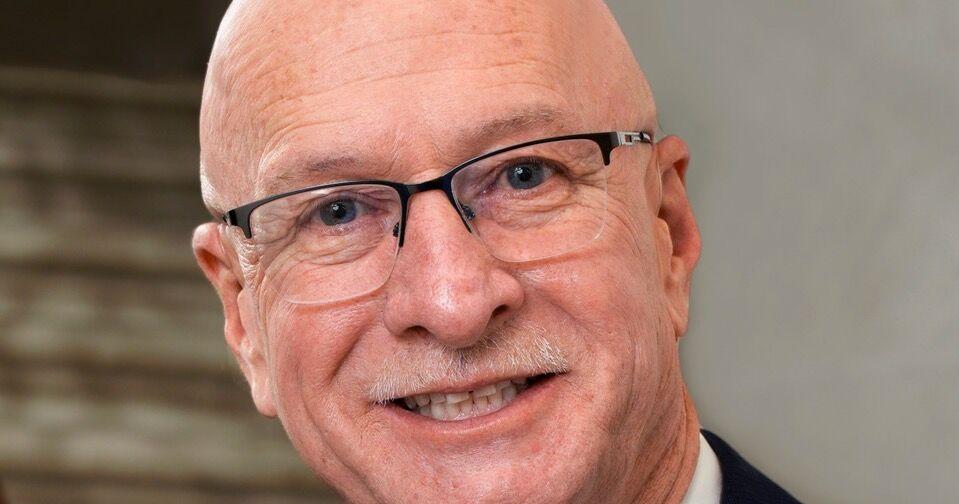Report on U.S. Battery Energy Storage System (BESS) Expansion and Alignment with Sustainable Development Goals
Recent announcements from Georgia Power, Recurrent Energy, and Redwood Materials signal an expansion of at least 1.4 GWh of battery energy storage capacity in the United States. These projects are instrumental in advancing key United Nations Sustainable Development Goals (SDGs), particularly SDG 7 (Affordable and Clean Energy), SDG 9 (Industry, Innovation, and Infrastructure), SDG 11 (Sustainable Cities and Communities), and SDG 13 (Climate Action).
Georgia Power: Grid Modernization and Clean Energy Integration
Georgia Power has commenced construction on significant energy storage projects, reinforcing its commitment to a modernized and sustainable energy grid.
- Primary Project: Construction has begun on a 200 MW/800 MWh BESS in Twiggs County. This utility-owned asset, approved by the Georgia Public Service Commission (PSC), directly supports SDG 7 and SDG 13 by enhancing grid stability, which is essential for integrating intermittent renewable energy sources like the adjacent solar project.
- Strategic Planning: The project was selected through a tender as part of the 2023 Integrated Resource Plan Update, demonstrating a strategic approach to building resilient infrastructure in line with SDG 9.
- Expanding Portfolio: The Twiggs County site is part of a broader expansion of energy storage infrastructure. Other projects under construction include:
- The 49.5 MW Moody BESS in Lowndes County.
- The 128 MW Robbins BESS in Bibb County.
- The 530 MW McGrau Ford BESS (Phases I and II) in Cherokee County.
- The 57.5 MW Hammond BESS, located on the site of a retired coal-fired power station, contributing to a just transition and the goals of SDG 7.
- Future Commitments: The utility is seeking PSC approval for over 3.02 GW of additional storage capacity and plans to tender for another 500 MW. This long-term investment is crucial for ensuring the reliability of clean energy for sustainable communities, as outlined in SDG 11.
Recurrent Energy: Financing Sustainable Infrastructure in Arizona
Recurrent Energy has secured a major finance package to develop solar and storage projects, highlighting the critical role of multi-stakeholder partnerships in achieving sustainability targets.
- Financial Milestone: An $825 million finance package, comprising construction loans and a tax equity commitment, has been secured for projects in Maricopa County, Arizona.
- Partnerships for the Goals (SDG 17): The financing demonstrates a powerful collaboration between international and domestic institutions, including Norddeutsche Landesbank Girozentrale, Mitsubishi UFJ Financial Group, Inc., CoBank, Siemens Financial Services, and Wells Fargo. Such partnerships are essential for funding the large-scale infrastructure required to meet the SDGs.
- Funded Projects: The capital will fund the following assets, both of which advance SDG 7 by increasing the share of renewable energy:
- The 600 MWh Desert Bloom Storage site.
- The 150 MW (AC) Papago Solar project.
- Project Context: These developments are part of a multi-project agreement with Arizona Public Service (APS) and follow the successful commissioning of the 1.2 GWh Papago Storage site, which operates under a 20-year tolling agreement. These long-term arrangements provide the stable framework needed for sustainable infrastructure investment (SDG 9).
Redwood Materials: Strengthening the Domestic Supply Chain for a Circular Economy
A new funding round for Redwood Materials will bolster the domestic supply chain for battery components, a foundational element for a sustainable energy transition.
- Capital Injection: The company raised $350 million in a Series E funding round led by Eclipse Ventures and including NVentures, the venture capital arm of Nvidia.
- Industry and Innovation (SDG 9): Redwood Materials develops BESS, manufactures battery components, and produces critical raw materials. This vertical integration strengthens the U.S. industrial base and fosters innovation in sustainable technology.
- Responsible Consumption and Production (SDG 12): By creating a “new generation of US-made energy storage systems,” Redwood aims to reduce reliance on imported lithium iron phosphate (LFP) batteries. This initiative promotes more resilient, secure, and responsible supply chains, which are central to the principles of SDG 12.
- Broader Impact: The investment across Redwood’s operations supports the entire clean energy ecosystem, from raw material sourcing to finished energy storage products, thereby contributing to the long-term viability of SDG 7 and SDG 13.
Analysis of Sustainable Development Goals (SDGs) in the Article
1. Which SDGs are addressed or connected to the issues highlighted in the article?
-
SDG 7: Affordable and Clean Energy
The article’s primary focus is on the development of Battery Energy Storage Systems (BESS), which are crucial for stabilizing the power grid and enabling a higher penetration of intermittent renewable energy sources like solar. Projects like the 800 MWh BESS in Georgia and the 600 MWh project in Arizona directly contribute to building a more robust and clean energy infrastructure.
-
SDG 9: Industry, Innovation, and Infrastructure
The construction of large-scale energy projects, such as the multiple BESS sites by Georgia Power and the solar-plus-storage facilities in Arizona, represents a significant investment in resilient and sustainable infrastructure. Furthermore, Redwood Materials’ development of a “new generation of US-made energy storage systems” highlights innovation in the energy industry.
-
SDG 13: Climate Action
By facilitating the integration of solar power and providing an alternative to fossil fuel power generation, BESS projects are a direct measure to combat climate change. The article mentions the construction of the Hammond BESS on the site of a “retired Plant Hammond coal-fired power station,” which is a clear example of transitioning from fossil fuels to clean energy infrastructure to mitigate climate change.
-
SDG 17: Partnerships for the Goals
The article showcases numerous collaborations between different entities. These include public-private partnerships between utility companies (Georgia Power, Arizona Public Service) and construction/engineering firms (Crowder Industrial Construction, Primoris Services Corp.), as well as complex financial partnerships involving international banks (Norddeutsche Landesbank, Mitsubishi UFJ), domestic banks (CoBank, Wells Fargo), and venture capital firms (Eclipse Ventures, NVentures) to fund these large-scale projects.
2. What specific targets under those SDGs can be identified based on the article’s content?
-
Target 7.2: By 2030, increase substantially the share of renewable energy in the global energy mix.
The article discusses BESS projects being built next to solar facilities (e.g., Twiggs County Solar project, Papago Solar project). These storage systems are essential for overcoming the intermittency of solar power, thereby allowing a greater share of renewable energy to be integrated into the grid reliably.
-
Target 9.1: Develop quality, reliable, sustainable and resilient infrastructure… to support economic development and human well-being.
The development of over 1.4 GWh of new battery storage capacity across Georgia and Arizona is a direct effort to build reliable and resilient energy infrastructure. These systems enhance grid stability and ensure a consistent power supply, which is fundamental for economic development.
-
Target 9.4: By 2030, upgrade infrastructure and retrofit industries to make them sustainable… and greater adoption of clean and environmentally sound technologies.
The construction of the 57.5 MW Hammond BESS on the site of a retired coal-fired power station is a direct example of retrofitting industrial sites with clean technology. Redwood Materials’ work to create US-made energy storage systems also contributes to developing more sustainable industrial processes by “reducing reliance on imported LFP batteries.”
-
Target 13.2: Integrate climate change measures into national policies, strategies and planning.
Georgia Power’s decision to build the BESS was a result of its “Integrated Resource Plan Update in 2023” and was approved by the Georgia Public Service Commission. This demonstrates the integration of climate-friendly energy storage solutions into official utility and state-level strategic planning.
-
Target 17.17: Encourage and promote effective public, public-private and civil society partnerships.
The article details multiple partnerships. For instance, Recurrent Energy secured an “$825 million finance package” from a consortium of lenders (Norddeutsche Landesbank, Mitsubishi UFJ, CoBank, Siemens Financial Services) and a tax equity partner (Wells Fargo) for its projects with the utility Arizona Public Service. This exemplifies a multi-stakeholder partnership to mobilize financial resources for sustainable development.
3. Are there any indicators mentioned or implied in the article that can be used to measure progress towards the identified targets?
-
Indicator for Target 7.2: Installed capacity of renewable energy and energy storage.
The article provides specific quantitative data that can be used to measure progress. This includes the capacity of BESS projects in megawatt-hours (MWh) or gigawatt-hours (GWh), such as the “800 MWh site” in Georgia, the “600 MWh project” in Arizona, and Georgia Power’s plan to seek approval for “more than 3.02 GW of energy storage capacity.” The capacity of solar projects, like the “150 MW (AC) Papago Solar project,” is also a direct indicator.
-
Indicator for Target 9.1 & 17.17: Investment in infrastructure and value of public-private partnerships.
The article explicitly states the financial commitments made to these infrastructure projects. The “$825 million finance package” for the Arizona projects and the “$350 million funding round” for Redwood Materials are direct monetary indicators of investment flowing into sustainable infrastructure and technology, and they quantify the value of the partnerships formed to enable these projects.
-
Indicator for Target 9.4: Number of industrial sites converted to sustainable uses.
While not a formal SDG indicator, the article provides a specific example that can be tracked: the conversion of the “retired Plant Hammond coal-fired power station site” into a location for a BESS. Tracking the number of such conversions from fossil fuel to clean energy infrastructure serves as a practical measure of progress.
Summary of SDGs, Targets, and Indicators
| SDGs | Targets | Indicators |
|---|---|---|
| SDG 7: Affordable and Clean Energy | 7.2: Increase substantially the share of renewable energy in the global energy mix. | Total installed capacity of battery energy storage (e.g., 1.4 GWh, 800 MWh, 600 MWh) and associated solar projects (e.g., 150 MW). |
| SDG 9: Industry, Innovation, and Infrastructure | 9.1: Develop quality, reliable, sustainable and resilient infrastructure. 9.4: Upgrade infrastructure and retrofit industries to make them sustainable. |
Financial investment in new energy infrastructure (e.g., “$825 million finance package”). Number of former fossil fuel sites repurposed for clean energy (e.g., “retired Plant Hammond coal-fired power station site”). |
| SDG 13: Climate Action | 13.2: Integrate climate change measures into national policies, strategies and planning. | Inclusion of large-scale energy storage projects in official utility planning documents (e.g., Georgia Power’s “Integrated Resource Plan Update”). |
| SDG 17: Partnerships for the Goals | 17.17: Encourage and promote effective public, public-private and civil society partnerships. | Value of financial commitments from multi-stakeholder partnerships (e.g., “$825 million” from banks for Recurrent Energy’s projects; “$350 million” funding round for Redwood Materials). |
Source: ess-news.com







